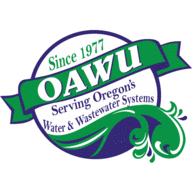Public Safety Ballot Measure
After a failed levy attempt for critical funding fell short, the City of Gresham turned to DHM to conduct in-depth research that uncovered voters’ concerns and priorities.
Case Study
Small water systems—often rural and land resource-constrained—face mounting challenges related to aging infrastructure, limited financial capacity, and evolving regulatory demands. House Bill 2010 (2023 Regular Session) of the Oregon State Legislature allocated funding to evaluate vulnerabilities and priorities of these systems. In response, the Oregon Association of Water Utilities (OAWU) partnered with DHM to conduct a statewide survey of staff at small water systems to inform future investments and policy support.
In August of 2024, DHM surveyed small water systems in Oregon, exploring system performance and needs across multiple areas, including infrastructure, financial stability, emergency preparedness, workforce capacity, and regulatory compliance. Respondents were asked to assess both the quality and urgency of needs in each area, creating clear priorities for investment and support strategies.
For Oregon legislators and water sector leaders seeking to sustain safe, reliable water services in small, rural communities, DHM’s research provided an insight-driven roadmap for future infrastructure funding and financial support.
